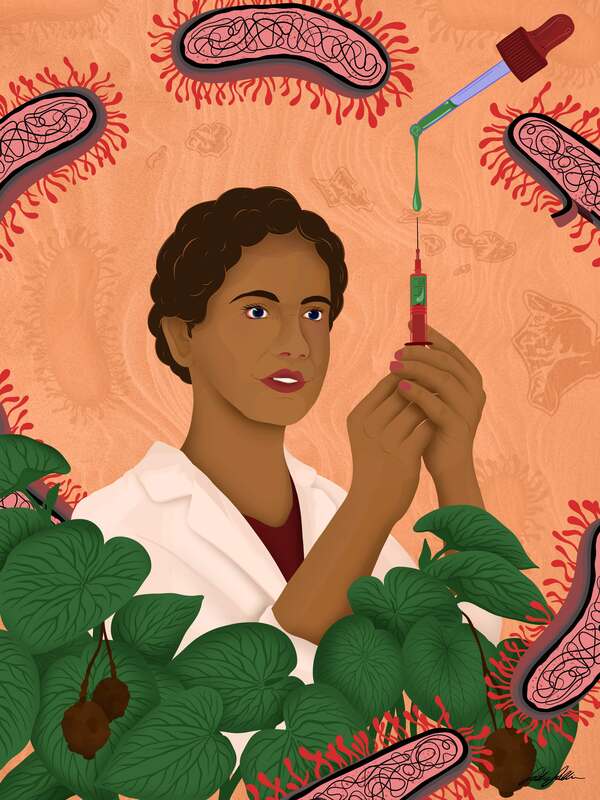|
Alice Ball, (1892-1916)
Seattle, Washington, USA Digital Illustration, 24" x 32", 2022 Known as the chemist who developed the “Ball Method,” Alice Ball was the scientist behind the first partially effective treatment for leprosy. She was the first African American to earn her master’s degree from the University of Hawaii and its first African American chemistry professor. Before 1916, leprosy often led to death. Doctors used chaulmoogra oil to treat the disease. The oil caused bubbles to form under the skin and forced patients to vomit. Using her studies on the kava plant, Ball found a way to make the oil injectable (“Ball Method”) by isolating ester compounds from the oil and modifying them. Ball worked with Dr. Arthur Dean, her co-teacher in chemistry and the University of Hawaii’s President. After Ball’s death, Dr. Dean went on to publish the findings but never mentioned Ball’s key contributions claiming them as his own. Dean named the technique after himself and began producing large quantities of the injectable oil. Only decades later was Ball rediscovered and recognized at the University of Hawaii and the treatment was renamed in her honor. Later, a new form of drug treatment was discovered to treat leprosy, and the “Ball Method” became obsolete. However, her method and knowledge on injectable oils helped treat leprosy for decades. February 29th is declared “Alice Ball Day,” giving us a reason to celebrate her every four years. |
Proudly powered by Weebly
